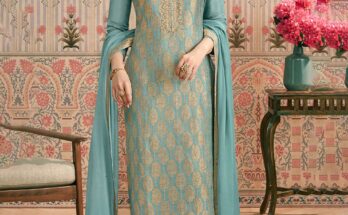“Sow cloth is the answer to sustainable fashion. With a focus on eco-consciousness and style, this innovative fabric revolutionizes the way we think about clothing. It combines traditional craftsmanship with modern technology to create a versatile, durable material that respects both nature and design. Whether you’re looking for a timeless wardrobe staple or a statement piece, sow cloth offers a unique solution that champions sustainability without compromising on quality. Discover the beauty and benefits of sow cloth in our exploration of this transformative textile.”
The Magic of Sow Cloth: A Comprehensive Guide to this Versatile Material
Welcome, young readers, to the wonderful world of sow cloth! Have you ever wondered what sow cloth is and why it’s so special? In this article, we’ll dive deep into the fascinating realm of sow cloth and explore its many uses and benefits.
What is Sow Cloth?
Sow cloth, also known as hessian or jute fabric, is a versatile material made from the fibers of the jute plant. It has a coarse texture and is known for its strength and durability. Sow cloth has been used for centuries in various applications due to its excellent properties.
The History of Sow Cloth
The history of sow cloth dates back thousands of years. It originated in the Indian subcontinent and quickly spread to other parts of the world due to its usefulness. Sow cloth was traditionally used to make sacks for storing and transporting goods, but over time, its applications have expanded to include a wide range of uses.
Uses of Sow Cloth
Sow cloth is a remarkably versatile material with a wide range of uses. Here are some common applications of sow cloth:
1. Agriculture
In agriculture, sow cloth is often used to create shade structures for crops. Its breathable nature allows air and water to pass through while providing protection from excessive sunlight.
2. Crafts and DIY Projects
Sow cloth is a popular choice for crafters and DIY enthusiasts due to its durability and texture. It can be used to make bags, wall hangings, and other decorative items.
3. Erosion Control
Due to its strong and durable nature, sow cloth is often used in erosion control projects. It helps prevent soil erosion by stabilizing the ground and allowing vegetation to take root.
4. Upholstery
Sow cloth is sometimes used in upholstery to provide support and durability to furniture pieces. Its natural look and texture can add a rustic charm to any home.
The Benefits of Sow Cloth
There are many reasons why sow cloth is such a popular material. Here are some of the key benefits of using sow cloth:
1. Eco-Friendly
Sow cloth is a natural material that is biodegradable and sustainable. Unlike synthetic materials, sow cloth is environmentally friendly and does not contribute to pollution.
2. Durable
One of the standout features of sow cloth is its durability. It can withstand heavy use and harsh conditions, making it ideal for long-lasting projects.
3. Breathable
Sow cloth is breathable, allowing air and moisture to pass through. This makes it ideal for applications where ventilation is important, such as in agriculture and construction.
4. Versatile
From agriculture to crafts to home decor, sow cloth can be used in a wide variety of applications. Its versatility makes it a valuable material to have on hand.
How to Care for Sow Cloth
To ensure the longevity of your sow cloth items, it’s important to care for them properly. Here are some simple tips for caring for sow cloth:
1. Hand Wash
Whenever possible, hand wash sow cloth items in cold water with a mild detergent. Avoid harsh chemicals that can weaken the fibers.
2. Air Dry
Avoid using a dryer to dry sow cloth items, as this can cause shrinkage and damage. Instead, air dry them in a shaded area to preserve their shape and integrity.
3. Store Properly
When not in use, store sow cloth items in a cool, dry place away from direct sunlight. This will help prevent mold and discoloration over time.
In Conclusion
As you can see, sow cloth is a truly remarkable material with a wide range of uses and benefits. Whether you’re a crafter, a farmer, or simply someone who appreciates natural materials, sow cloth has something to offer. So, the next time you come across sow cloth, remember its rich history and the magic it can bring to your projects!
We hope you enjoyed this journey into the world of sow cloth. Stay curious, stay creative, and keep exploring the wonders of this amazing material!
How to sew a hole – How to stitch a hole in clothes – Hand sew up a hole in pants, shirt, leggings
Frequently Asked Questions
What is sow cloth and how is it used in gardening?
Sow cloth is a porous fabric that allows water and air to pass through while blocking weeds. Gardeners use sow cloth as a weed barrier to prevent weed growth, conserve soil moisture, and regulate soil temperature. It is often laid down on the soil before planting to create a healthy growing environment for plants.
How does sow cloth help with weed control in the garden?
Sow cloth acts as a physical barrier that prevents weed seeds from germinating and growing by blocking sunlight. This reduces the need for manual weeding and helps gardeners maintain a weed-free garden with less effort.
Can sow cloth be reused in the garden?
Yes, sow cloth can be reused in the garden for multiple growing seasons. The durable material of sow cloth allows it to be easily cleaned, folded, and stored for later use. By reusing sow cloth, gardeners can save money and reduce waste in their gardening practices.
Is sow cloth environmentally friendly?
Sow cloth is considered environmentally friendly because it reduces the need for chemical weed killers and excessive watering in the garden. It promotes a more sustainable gardening approach by providing a natural weed control solution that is safe for plants, animals, and the environment.
Final Thoughts
In conclusion, sowing cloth is a sustainable practice that promotes self-sufficiency and reduces waste. By reusing fabric scraps to create new garments or home textiles, individuals can contribute to a more environmentally friendly lifestyle. Sow cloth not only conserves resources but also allows for creative expression and unique, handmade pieces. Embracing the sow cloth movement can lead to a more conscious approach to consumption and a deeper connection to the items we use in our daily lives.




